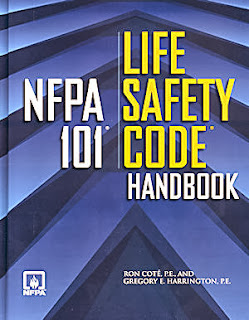The terms "code" and "standards" are commonly used to represent the same thing. However, the two terms stand for completely different meanings. Fire alarm codes are written rules and regulations that are then adopted as law for enforcement by an AHJ or Authority Having Jurisdiction. Fire alarm codes once put in place, are the minimum requirements that must be complied with to provide a reasonable degree of life safety. Codes are written based on standards. Fire alarm standards are generally produced by a consensus or technically committee to represent a minimum level of how to install certain types of protection. Standards are focused on one particular system component and give guidelines on the proper installation, maintenance and inspecting.

Fire Alarm Code:
Fire alarm codes specify when and where a given type of protection is required. These fire alarm codes are a minimum requirement and are encouraged to be exceeded. Below is a list of fire alarm and fire related code references:
- NFPA 30 (Flammable and Combustible Liquids Code)
- NFPA 54 (National Fuel Gas Code)
- NFPA 70 (National Electrical Code)
- NFPA 101 (Life Safety Code)
- NFPA 5000 (Building Construction and Safety Code)
- IBC (International Building Code)
- IFC (International Fire Code)
Fire Alarm Standard:
Fire alarm standards detail how a specific protection required by the code is to be achieved. Below is an example list of fire alarm and fire related standards:
- NFPA 10 (Standard for Portable Fire Extinguishers)
- NFPA 13 (Standard for the Installation of Sprinkler Systems)
- NFPA 14 (Standard for the Installation of Standpipes and Hose Systems)
- NFPA 20 (Standard for the Installation of Stationary Pumps for Fire Protection)
- NFPA 72 (National Fire Alarm and Signaling Code)*
* Keep in mind that NFPA 72 tells us how to install fire alarm systems. It doesn't explain what type of equipment (pull stations, smoke detectors, duct detectors, waterflows, tampers) should be used. This information can be found in the specific jurisdiction's adopted building code.
How you determine the Fire Alarm requirements.
Check with your local authority having jurisdiction to determine what edition of the applicable codes they are currently enforcing. Most codes will determine the fire alarm and automatic fire sprinklers based on the occupancy classifications of the particular building. If NFPA 101 Life Safety Code is enforced, consult section 9.6 for the exact system installation requirements.


No comments:
Post a Comment